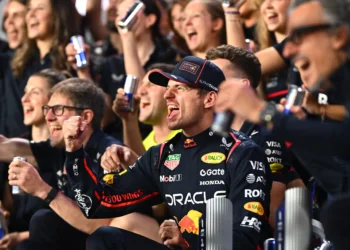Get ready for a wild ride as the F1 penalty guidelines are fully exposed, revealing shocking insights that will leave you on the edge of your seat!
In a groundbreaking revelation, Formula 1’s stewards’ penalty guidelines and driving standards documents have been unveiled for the very first time, shedding light on the intricate world of rules and repercussions within the pinnacle of motorsport. While some details were already known to the public, the comprehensive documents offer a riveting look into how the FIA handles infractions on the racetrack.
Amidst mounting frustrations among drivers regarding transparency over regulations, the release of the guidelines marks a significant moment in F1 history. From the inner workings of the stewards’ decision-making process to the severity of penalties for various offenses, here’s everything you need to know about this eye-opening revelation.
Delving into the heart of the matter, the guidelines outline a meticulous ‘menu’ system that dictates the consequences for a wide array of rules violations during practice, qualifying, and races. From mandatory sanctions for specific breaches to discretionary penalties based on the severity of the offense, the document leaves no stone unturned in ensuring fair and consistent judgment on the track.
Revisiting a controversial incident from the recent Spanish Grand Prix, the guidelines indirectly address Max Verstappen’s clash with George Russell, hinting at the potential repercussions if the collision had been deemed intentional. The distinction between accidental contact and deliberate acts carries significant weight, as seen in the recommended penalties that could have resulted in a one-race ban for Verstappen.
Moreover, the newly unveiled driving standards guidelines, in effect since 2024, have played a pivotal role in reshaping the dynamics of racing in F1. By offering a transparent framework for competitors and stewards alike, these guidelines aim to enhance understanding and promote fair play on the track.
Highlighted within the guidelines are specific criteria for overtaking maneuvers, emphasizing the importance of clean and controlled racing. From entitlement to space on the inside of corners to stricter requirements for outside overtakes, the standards set a clear benchmark for driver conduct and sportsmanship.
As the FIA aims to crack down on unsportsmanlike behavior, a closer look at Appendix B reveals the consequences of driver misconduct, including penalties for swearing and abuse of officials. With a zero-tolerance policy in place, the governing body is taking decisive steps to uphold the integrity of the sport and maintain a professional environment both on and off the track.
Furthermore, the guidelines address a range of infractions, from impeding other drivers to unsafe releases, with varying degrees of severity based on the session in which the offense occurs. By providing clarity on penalties and sanctions, the FIA seeks to ensure a level playing field for all competitors in the high-stakes world of Formula 1.
In a sport where split-second decisions can make or break a race, the unveiling of these comprehensive guidelines marks a significant milestone towards fairness, transparency, and accountability in Formula 1. As drivers, teams, and fans navigate the intricacies of the rulebook, one thing remains clear – the stakes have never been higher in the world of motorsport.










